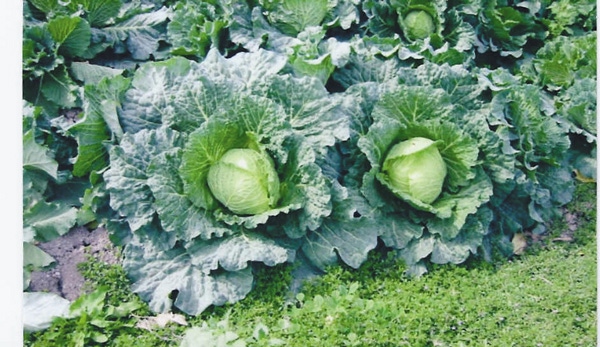
New laws have been written to enhance U.S. food safety but the food production industry is still waiting to see how final rules for the Food Safety Modernization Act will affect their operations.
“Regulations are still in development,” said David E. Gombas, vice president, scientific and technical affairs, United Fresh Produce Association. Gombas, speaking at the recent Texas Food Safety Conference in Austin, said the industry is preparing for those new rules and improving food safety as commodities and as individual operations. Key elements of those preparations include preventive controls for fresh produce safety, preventive controls for good manufacturing practices operations (GMP), and import rules.
Also on the agenda are issues of intentional contamination and the National Leafy Greens Marketing Agreement.
Gombas recommended everyone in the produce industry “get involved. The Texas Vegetable Association, the Texas Produce Association and others will be watching and submitting comments for you,” he said. “Only those at the table will be heard.”
Gombas said individual commodities are hoping that preventive controls for fresh produce will be “risk-based by commodity. FDA recognizes that the industry that grows and handles commodities knows better than they do how best to minimize risks in a practical way.”
He said the industry already has commodity specific guidance (some voluntary) for some commodities and others are being developed. Some of these voluntary guidelines will become mandatory with the new produce rules.
Improving food safety by individual operation is also critical, he said. That includes attention to worker training. Gombas said managers should consider: “What are the risks? How likely are they in your operation? What can you do about them?”
He recommended managers address at least the five most likely risks—water, soil, workers, equipment and animals. He said managers should determine how those risks will be controlled and monitored and if corrective action is necessary.
Keep it simple
Records, he said, are important. “Keep it simple but keep it accurate.”
Product recalls may be the bane of the industry but Gombas said operations can survive—with adequate preparation. “You don’t have to do anything wrong to be caught up in a recall,” he said. “Recalls can be painful or very painful but fortune favors the prepared. Many unprepared companies no longer exist.”
He said likelihood of recalls is greater with increased surveillance of fresh produce for pathogens. “All fresh produce is now treated as ready-to-eat. And when pathogens are detected public health agencies are obligated to ask companies to recall the product.”
He said investigators “rarely find the cause” of contamination.
Audits are part of the process and a fact of doing business in the produce industry. Gombas said standards among different audits may be similar but “different enough to require complete repeat of an audit. Operations complain of ‘audit fatigue,’” he said.
“Also, customers have difficulty accepting audits from different schemes. Standards and audit processes are too different to compare results.”
An industry vision is to develop a “harmonized food safety standard and checklist for Good Agriculture Practices (GAP) audits and globally accepted auditing processes to protect consumers from potential hazards that may contaminate produce at that stage of the supply chain and that will build efficiencies into the audit process.”
Gombas said one audit by any credible third party should be acceptable to all buyers.
The industry has developed a technical working group to study harmonization. The group will include more than 150 stakeholders including customers, suppliers, government, audit companies, association staffs and others.
“We want a broad range of fresh produce commodities, operation sizes and regions, including Canada and Mexico,” Gombas said. “No stakeholders are excluded.”
So far, the process has identified commonly accepted GAP audits standards, 60 common audit categories and has developed a first draft of Harmonized Standards. Two standards have been drafted, one for field operation, field harvest and field packing and one for post harvest operations.
The standard includes 84 audit items and 14 written policies/procedures, including: food safety plan; traceability and recall programs; toilet, worker hygiene and health policy; and a water management plan.
The standard includes 14 types of records including training, soil amendments, agricultural chemicals, pre-plant and pre-harvest risk assessments and microbial testing, if performed.
“We want one audit for all commodities,” Gombas said. That audit will focus on the most likely food safety risks and the questions will be the same regardless of operation region, size or commodity grown or handled.
The next step is to select commodities to “pilot the standards,” Gombas said. Pilot commodities could include apples, potatoes, leafy greens, mushrooms, citrus and berries. Large and small grower and packing operations will be included and the audit team will consist of operation, auditor and customer.
“We will use findings from this program to update and finalize harmonized standards,” Gombas said. That could occur sometime in mid-year. Training auditors and suppliers also will be part of the process.
He said the industry needs research into critical food safety issues. “We don’t need more research to find more risks. Risks are all around us. We need hard research.”
He said studies should focus on what to do about risks such as pathogens in open source irrigation water, pathogens in contaminated soil, and pathogens from animals. He said a better understanding of how useful testing is would also be helpful. “We need to know when to test, where and how far to go. We also need to understand region and commodity differences.”
Gombas said research should concentrate on “real-world conditions and what pathogens are doing instead of what they can be made to do in a laboratory setting.”
He said data sharing and collaboration will be crucial between researchers, industry, and government. “We must learn from outbreak data, epidemiology and seasonality.”
He said funding agencies must be engaged and that a real-time educational outreach is needed.
“A fresh produce ‘kill step’, while a ‘high reward’ achievement is a long-term, low likelihood goal,” he said.
About the Author(s)
You May Also Like






